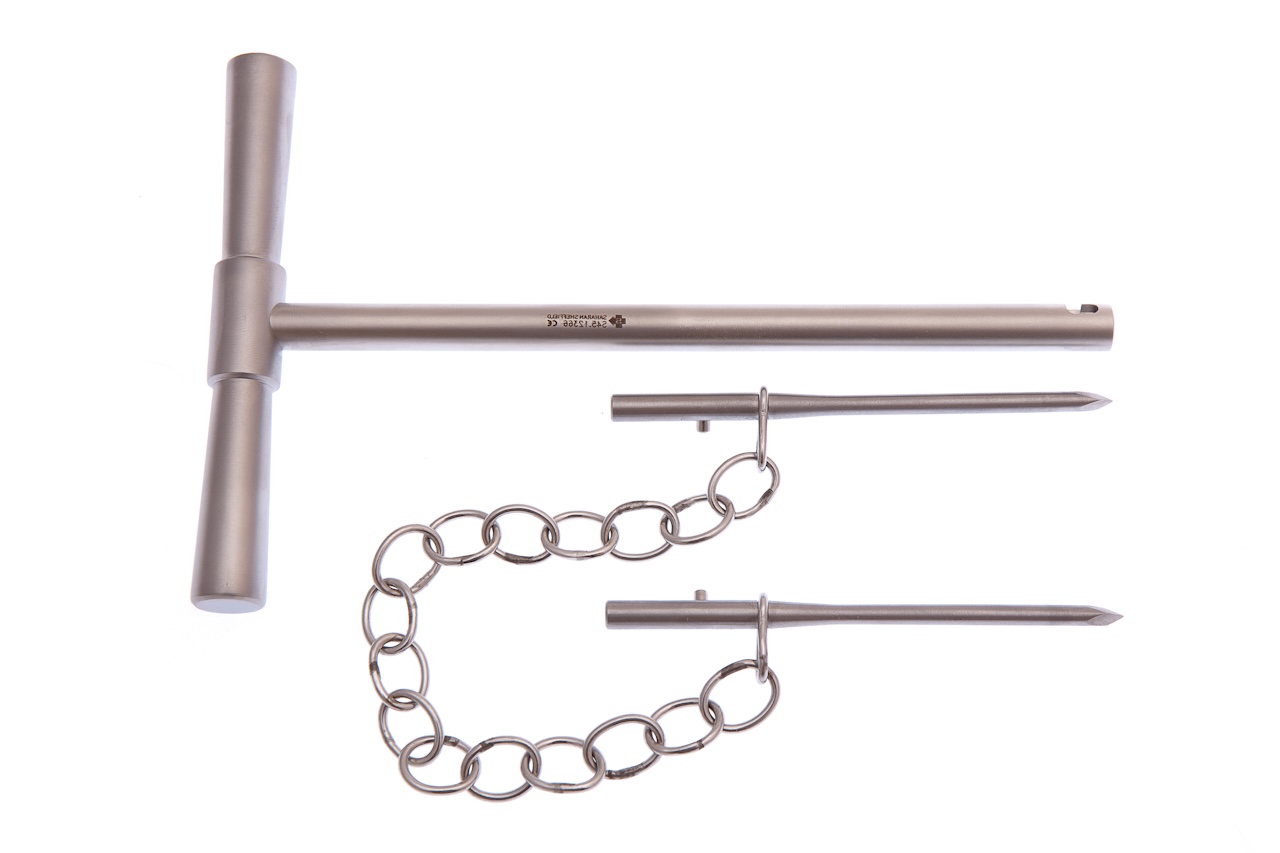
What is a Charnley Retractor? A Charnley Retractor is a surgical instrument used primarily in orthopedic procedures, especially hip surgeries. Named after Sir John Charnley, a pioneer in hip replacement surgery, this tool helps surgeons hold back tissues, providing a clear view of the surgical site. Its design includes adjustable arms and blades, making it versatile for different surgical needs. Surgeons rely on it for its precision and reliability. Understanding its role can give you a deeper appreciation of the complexities involved in orthopedic surgeries. Ready to learn more? Here are 30 intriguing facts about the Charnley Retractor!
Key Takeaways:
- The Charnley Retractor is a special tool used in hip and knee surgeries. It helps surgeons see better and reduces tissue damage, making surgeries faster and safer.
- Sir John Charnley invented the Charnley Retractor in the 1960s, and it has since been improved with LED lights, disposable parts, and digital monitoring. It's a key tool in modern orthopedic surgery.
What is a Charnley Retractor?
The Charnley retractor is a surgical instrument primarily used in orthopedic procedures. Named after Sir John Charnley, a pioneer in joint replacement surgery, this tool has revolutionized how surgeons perform hip and knee surgeries. Here are some fascinating facts about this indispensable medical device.
-
The Charnley retractor was designed to provide better visibility and access during joint replacement surgeries.
-
It is commonly used in hip and knee arthroplasty, helping surgeons to hold tissues and muscles aside.
-
Sir John Charnley, the inventor, is also known as the father of modern hip replacement surgery.
-
The retractor is made of high-quality stainless steel, ensuring durability and sterilization.
-
It features adjustable arms, allowing surgeons to customize the tool for various procedures.
-
The device has a self-retaining mechanism, meaning it can hold tissues apart without constant manual effort.
How Does the Charnley Retractor Work?
Understanding the mechanics of the Charnley retractor can provide insight into its effectiveness in surgical procedures.
-
The retractor uses a ratchet system to lock the arms in place, providing stable retraction.
-
Its design minimizes tissue trauma, reducing the risk of complications post-surgery.
-
The tool's adjustable arms can be moved in multiple directions, offering flexibility during operations.
-
It includes a series of hooks and blades that can be attached to the arms for different surgical needs.
-
The retractor's ergonomic handle ensures a comfortable grip for the surgeon.
-
Its compact design allows for easy maneuverability in tight surgical spaces.
Benefits of Using a Charnley Retractor
This surgical tool offers numerous advantages that make it a preferred choice for many orthopedic surgeons.
-
The Charnley retractor significantly reduces the time required for joint replacement surgeries.
-
It helps in maintaining a clear surgical field, which is crucial for precision.
-
The tool's self-retaining feature allows surgeons to focus more on the procedure rather than holding the retractor.
-
Its design reduces the need for additional surgical staff, making the operation more efficient.
-
The retractor's ability to minimize tissue damage leads to quicker patient recovery times.
-
It is versatile and can be used in various types of orthopedic surgeries beyond hip and knee replacements.
Historical Significance of the Charnley Retractor
The development of the Charnley retractor marked a significant milestone in medical history.
-
Sir John Charnley introduced the retractor in the 1960s, alongside his pioneering work in hip replacement.
-
The tool played a crucial role in the success of the first total hip replacement surgeries.
-
Its invention coincided with the development of other groundbreaking surgical techniques and tools.
-
The Charnley retractor set the standard for future surgical retractors, influencing their design and functionality.
-
It has been featured in numerous medical journals and textbooks as a key innovation in orthopedic surgery.
-
The retractor's design has remained largely unchanged since its inception, a testament to its effectiveness.
Modern Innovations and the Charnley Retractor
While the original design remains effective, modern advancements have introduced new features to the Charnley retractor.
-
Some modern versions include LED lights to improve visibility in the surgical field.
-
Advanced materials like titanium are now used to make the retractor lighter and more durable.
-
Digital integration allows for real-time monitoring of the retractor's position during surgery.
-
Some models come with disposable components to enhance sterility and reduce the risk of infection.
-
The retractor is now available in various sizes to accommodate different patient anatomies.
-
Training programs for orthopedic surgeons often include specialized modules on using the Charnley retractor effectively.
The Final Word on Charnley Retractors
Charnley retractors have revolutionized surgical procedures, especially in orthopedic surgeries. Their unique design provides unparalleled access and visibility, making complex operations more manageable. Surgeons rely on these tools for their precision and reliability, ensuring better patient outcomes.
Understanding the history and functionality of Charnley retractors highlights their importance in modern medicine. These retractors have stood the test of time, proving their worth in countless surgeries. Their continued use underscores their effectiveness and the trust surgeons place in them.
For anyone interested in medical tools or surgical advancements, Charnley retractors offer a fascinating glimpse into the evolution of surgical instruments. Their impact on the medical field is undeniable, making them a cornerstone in surgical practices.
Frequently Asked Questions
Was this page helpful?
Our commitment to delivering trustworthy and engaging content is at the heart of what we do. Each fact on our site is contributed by real users like you, bringing a wealth of diverse insights and information. To ensure the highest standards of accuracy and reliability, our dedicated editors meticulously review each submission. This process guarantees that the facts we share are not only fascinating but also credible. Trust in our commitment to quality and authenticity as you explore and learn with us.
